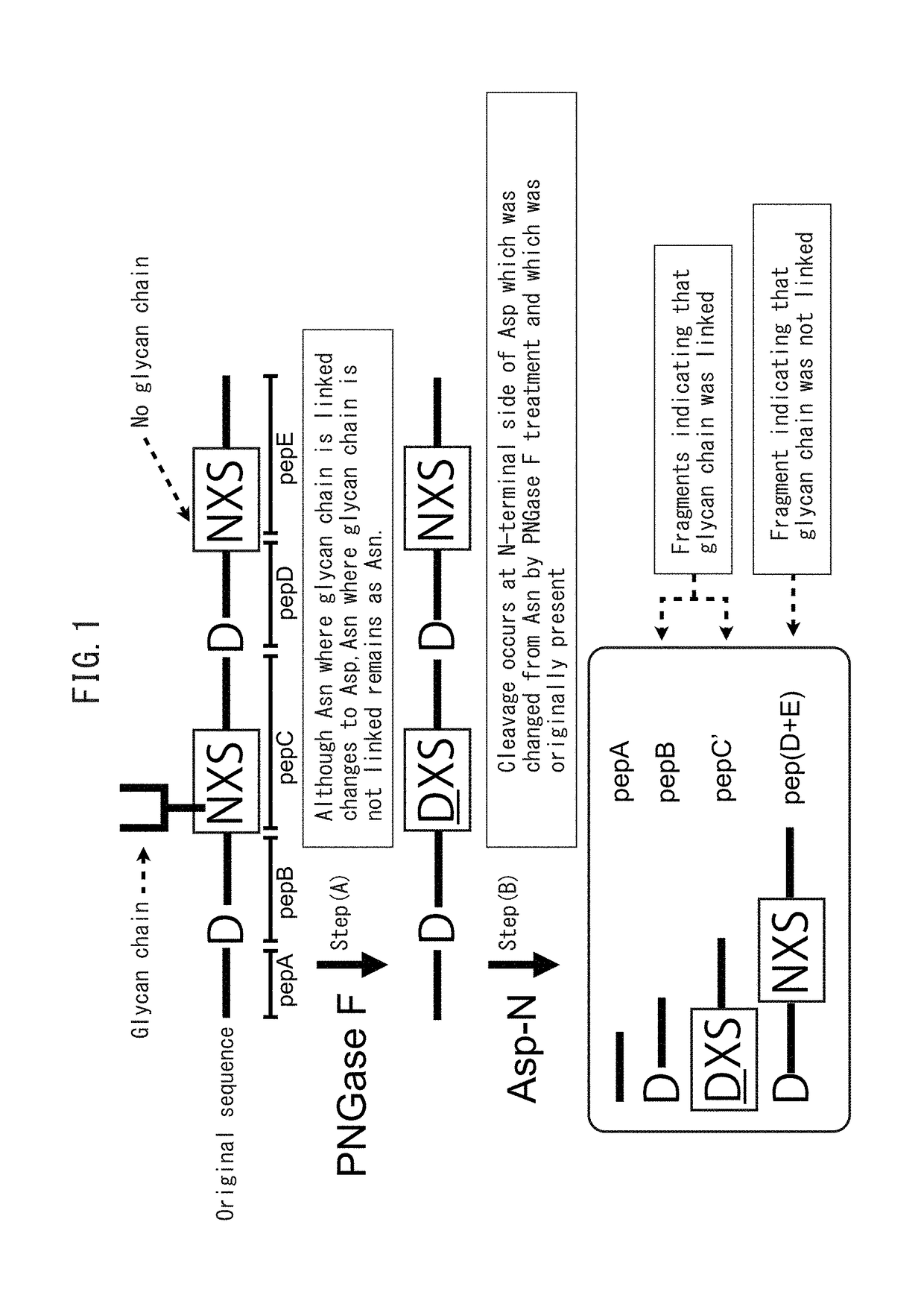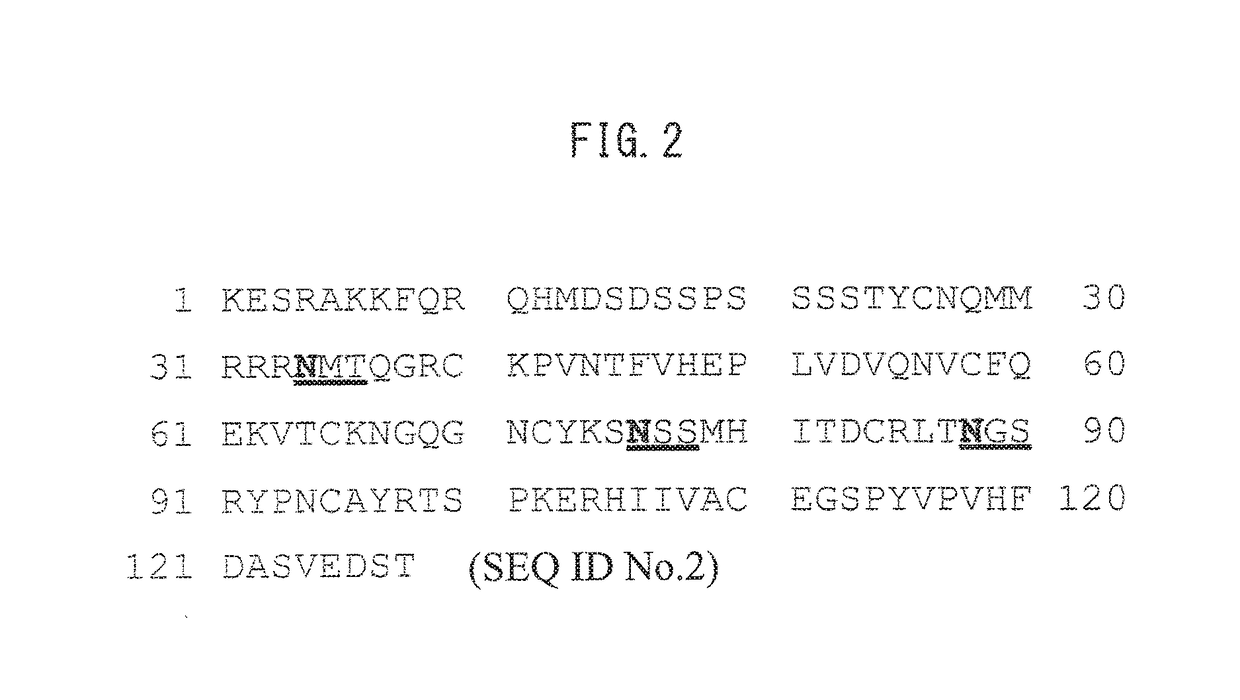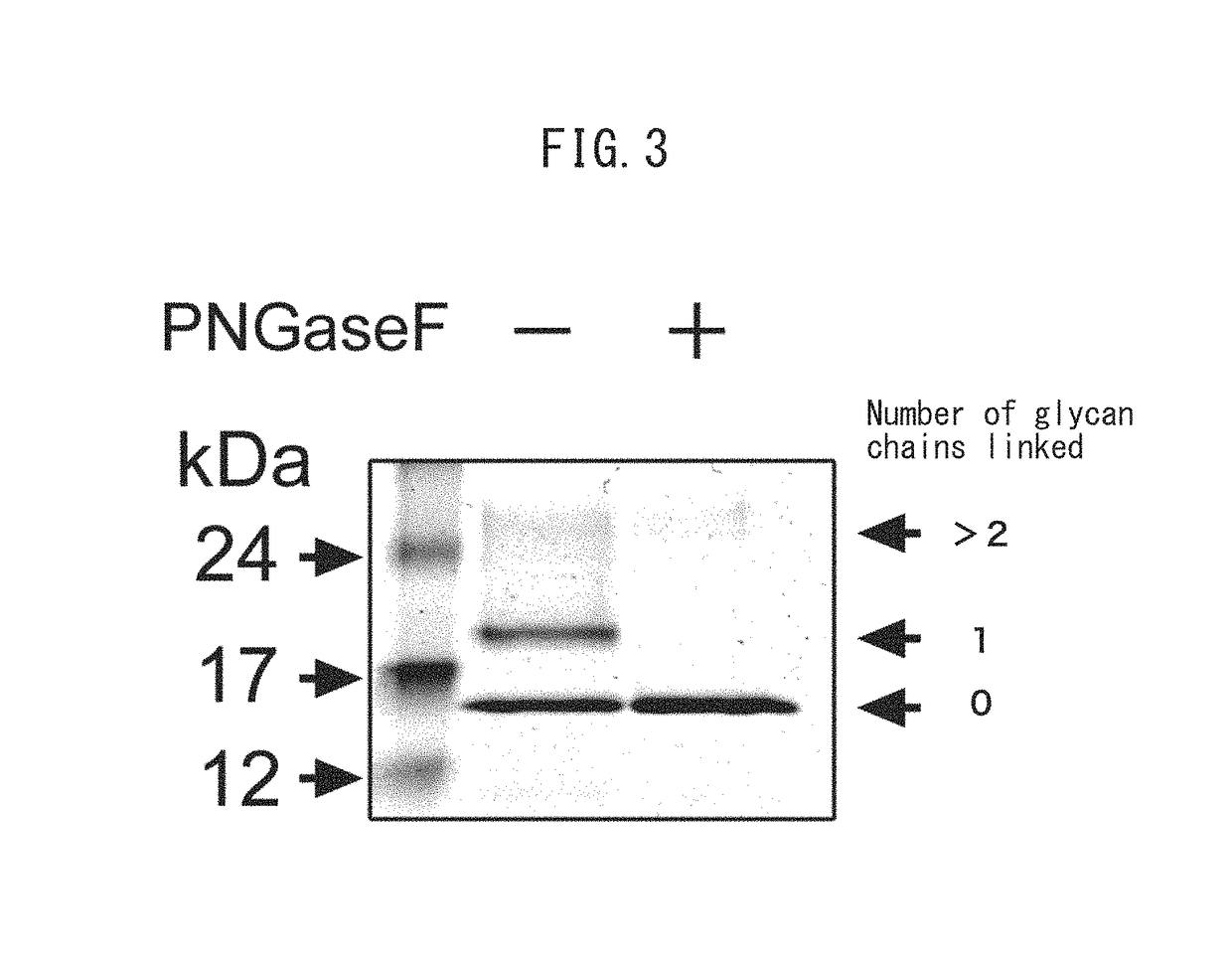Method for determining site having N-linked sugar chain added thereto or proportion of said addition
a technology of glycan chain and site, which is applied in the field of determining the proportion of site n-linked sugar chain or site n-linked glycan chain in glycoprotein, can solve the problem of difficult to clearly distinguish between whether the difference in mass is significant or no
- Summary
- Abstract
- Description
- Claims
- Application Information
AI Technical Summary
Benefits of technology
Problems solved by technology
Method used
Image
Examples
example 1
Detection of N-Linked Glycosylation Site by Asp-N Digestion
[0058]Recombinant human pancreas-specific RNase 1 used for analysis was obtained by introducing the full length gene of human pancreas-specific RNase 1 (SEQ ID NO. 1) into cultured Chinese hamster ovary cells (CHO-K1 cells) in accordance with ordinary methods and purifying the recombinant protein secreted into the medium by affinity chromatography. More specifically, a gene sequence encoding human pancreas-specific RNase 1 (SEQ ID NO. 1) was inserted into a pcDNA3.1-mycHis vector (Life Technologies Corp.) to prepare a mammalian cell expression vector. The prepared mammalian cell expression plasmid was inserted into CHO-K1 cells using Lipofectamine 2000 (Life Technologies Corp.) and the human pancreas-specific RNase 1 secreted into the medium was purified using an affinity column immobilized with anti-RNase 1 antibody.
[0059]RNase 1 is a protein composed of the amino acid sequence shown in SEQ ID NO. 2, sequences thereof enabl...
example 2
Determination of N-Linked Glycosylated Sites of RNase 1 Treated with Asp-N and Lys-C
[0074]RNase 1 expressed in CHO cells used in Example 1 was carbamidomethylated in accordance with ordinary methods to obtain an analysis sample (carbamidomethylated RNase 1), and the analysis sample was fragmented into peptides with endo-type peptidases Asp-N and Lys-C, and then analyzed with a mass spectrometer. The following provides a description of the analysis procedure. After deglycosylating the carbamidomethylated RNase 1 with PNGase F in the same manner as Example 1, the fragments were separated by SDS-PAGE and transferred to a PVDF membrane in accordance with ordinary methods. After washing the transferred PVDF membrane with ultrapure water, the membrane was stained with a solution containing Coomassie Brilliant Blue R250, and the portion corresponding to the recombinant RNase 1 that had been removed of glycan chains was cut out and subjected to treatment for mass spectrometry. The cut out P...
example 3
Analysis of Glycan Chain Addition State of Human Interferon Gamma
[0087]Human interferon gamma (SEQ ID NO. 28), which is used in pharmaceuticals in the form of antivirus drugs or anticancer agents, has two N-linked glycosylation sites as predicted from its amino acid sequence (Asn25, Asn97).
[0088]Commercially available research reagents in the form of recombinant human interferon gamma expressed in an Escherichia coli expression system (Peprotech Inc., Cat. No. 300-02) and recombinant human interferon gamma expressed in a. CHO cell expression system (Sino Biological Inc., Cat. No. 11725-HNAS) were respectively acquired and analyzed for the presence or absence of glycosylation at the N-linked glycosylation sites as unglycosylated recombinant human interferon gamma expressed in Escherichia coli and glycosylated recombinant human interferon gamma expressed in CHO cells.
[0089]Results of LC-MS / MS Analysis of Recombinant Human interferon Gamma Expressed in Escherichia coli
[0090]The result...
PUM
| Property | Measurement | Unit |
|---|---|---|
| mass | aaaaa | aaaaa |
| molecular weights | aaaaa | aaaaa |
| pH | aaaaa | aaaaa |
Abstract
Description
Claims
Application Information
 Login to View More
Login to View More - R&D
- Intellectual Property
- Life Sciences
- Materials
- Tech Scout
- Unparalleled Data Quality
- Higher Quality Content
- 60% Fewer Hallucinations
Browse by: Latest US Patents, China's latest patents, Technical Efficacy Thesaurus, Application Domain, Technology Topic, Popular Technical Reports.
© 2025 PatSnap. All rights reserved.Legal|Privacy policy|Modern Slavery Act Transparency Statement|Sitemap|About US| Contact US: help@patsnap.com



